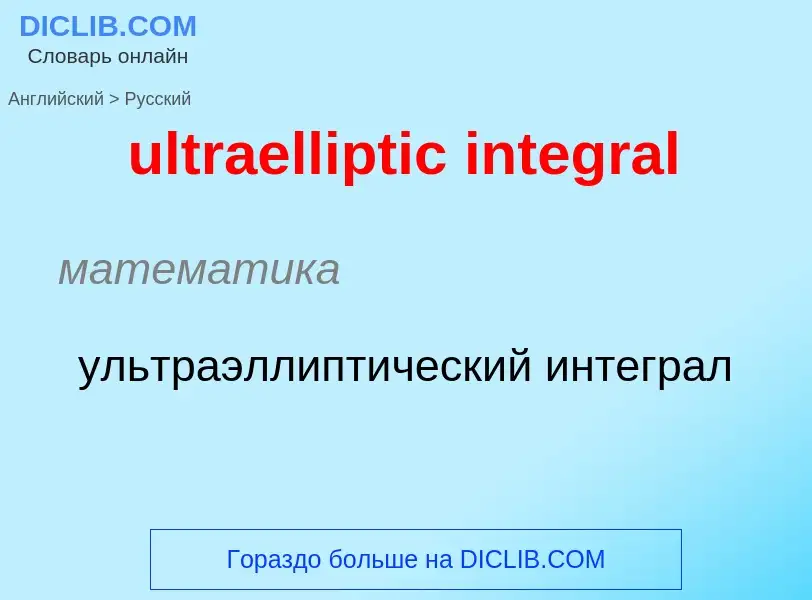Voer een woord of zin in in een taal naar keuze 👆
Taal:
Vertaling en analyse van woorden door kunstmatige intelligentie
Op deze pagina kunt u een gedetailleerde analyse krijgen van een woord of zin, geproduceerd met behulp van de beste kunstmatige intelligentietechnologie tot nu toe:
- hoe het woord wordt gebruikt
- gebruiksfrequentie
- het wordt vaker gebruikt in mondelinge of schriftelijke toespraken
- opties voor woordvertaling
- Gebruiksvoorbeelden (meerdere zinnen met vertaling)
- etymologie
ultraelliptic integral - vertaling naar russisch
EQUATIONS IN WHICH AN UNKNOWN FUNCTION APPEARS UNDER INTEGRALS
Integral equations; Singular integral equation; Singular integral equations; Numerical methods for integral equations; Integral Equations
ultraelliptic integral
математика
ультраэллиптический интеграл
weak integral
Weak integral; Gelfand-Pettis integral; Gelfand–Pettis integral; Gelfand integral; Dunford integral
математика
слабый интеграл
improper integral
LIMIT OF A DEFINITE INTEGRAL WITH AS ONE OR BOTH LIMITS APPROACH INFINITY OR VALUES AT WHICH THE INTEGRAND IS UNDEFINED
Improper Riemann integral; Improper integrals; Improper Integrals; Proper integral
общая лексика
несобственный интеграл
Wikipedia
Integral equation
In mathematics, integral equations are equations in which an unknown function appears under an integral sign. In mathematical notation, integral equations may thus be expressed as being of the form:
where is an integral operator acting on u. Hence, integral equations may be viewed as the analog to differential equations where instead of the equation involving derivatives, the equation contains integrals. A direct comparison can be seen with the mathematical form of the general integral equation above with the general form of a differential equation which may be expressed as follows:where may be viewed as a differential operator of order i. Due to this close connection between differential and integral equations, one can often convert between the two. For example, one method of solving a boundary value problem is by converting the differential equation with its boundary conditions into an integral equation and solving the integral equation. In addition, Because one can convert between the two, differential equations in physics such as Maxwell's equations often have an analog integral and differential form. See also, for example, Green's function and Fredholm theory.

![An improper Riemann integral of the second kind. The integral may fail to exist because of a [[vertical asymptote]] in the function. An improper Riemann integral of the second kind. The integral may fail to exist because of a [[vertical asymptote]] in the function.](https://commons.wikimedia.org/wiki/Special:FilePath/Improperintegral1.png?width=200)
